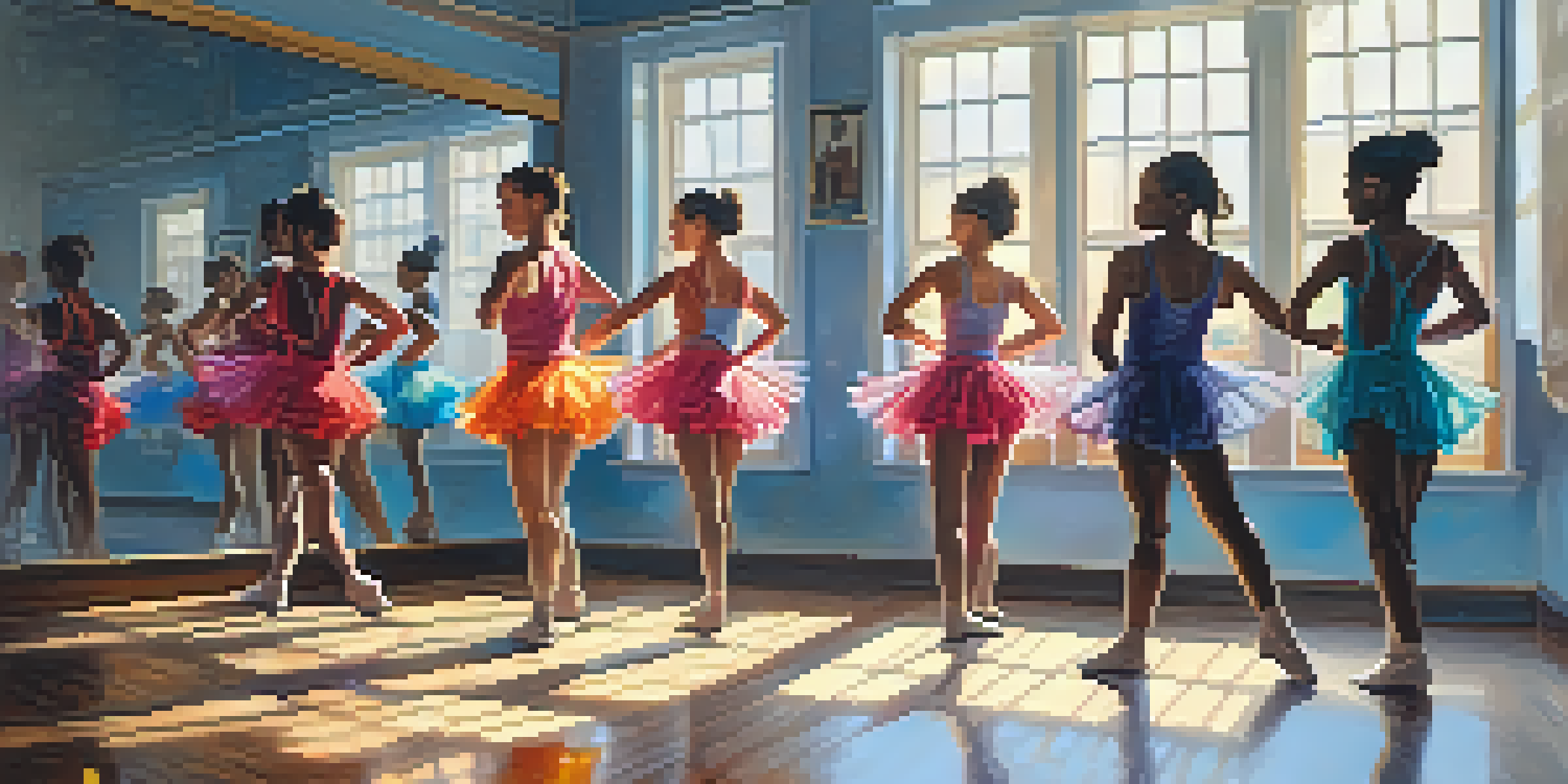Dance and Public Policy: Bridging the Funding Gap

Understanding the Current Funding Landscape for Dance
Dance, as an art form, often struggles to secure stable funding. Many dance organizations rely heavily on grants, donations, and ticket sales to survive. However, this funding landscape can be unpredictable, making it challenging for these organizations to plan their activities effectively.
Dance is the hidden language of the soul.
In recent years, public funding for the arts has faced cuts, leading to a funding gap that disproportionately affects smaller dance companies. This gap not only threatens the existence of these organizations but also limits opportunities for artists and dancers to showcase their work. Without consistent financial support, the vibrancy of the dance community is at risk.
Understanding the complexities of the funding landscape is crucial for stakeholders. By recognizing these challenges, policymakers can advocate for more robust funding initiatives that support the dance sector and ensure its sustainability.
The Role of Public Policy in Supporting the Arts
Public policy plays a vital role in shaping the funding environment for the arts, including dance. Policymakers can create programs and initiatives that provide financial support to organizations, ensuring that they have the resources needed to thrive. This support can take the form of grants, tax incentives, or direct funding from government agencies.

Moreover, public policy can help raise awareness about the importance of dance as an art form. By promoting the cultural and educational benefits of dance, policymakers can encourage community support and attract private funding. This creates a more favorable environment for dance organizations to flourish.
Funding Challenges for Dance Groups
Many dance organizations struggle to secure stable funding due to cuts in public arts funding, threatening their survival and opportunities for artists.
Ultimately, a strong public policy framework can bridge the funding gap and create a more equitable arts landscape. By prioritizing dance within the broader arts funding strategy, policymakers can help ensure that this vibrant art form continues to thrive.
Grassroots Movements: Powering Change in Dance Funding
Grassroots movements have emerged as powerful advocates for dance funding. Artists, dancers, and community members often unite to raise awareness about funding challenges and advocate for policy changes. These movements can mobilize support and create a sense of urgency around the need for increased funding.
Art is not freedom from discipline, but disciplined freedom.
Through campaigns, events, and social media initiatives, grassroots advocates can effectively communicate the value of dance to broader audiences. They can share personal stories that illustrate the impact of funding cuts on artists and communities, making a compelling case for why investment in dance is essential.
Grassroots movements not only raise awareness but often lead to tangible policy changes. By engaging with local governments and policymakers, these advocates can help create a more supportive funding environment for dance organizations.
Impact of Funding on Dance Education and Community Programs
The availability of funding significantly impacts dance education and community programs. When funding is robust, schools and community centers can offer diverse dance classes and workshops, fostering creativity and self-expression among participants. This not only enhances individual skills but also builds a sense of community.
Conversely, a lack of funding can lead to program cuts, leaving many aspiring dancers without access to quality training. This is particularly concerning for underserved communities where dance can serve as a vital outlet for youth. Without adequate support, these programs may struggle to survive, limiting opportunities for many.
Role of Policy in Arts Support
Public policy can significantly influence dance funding by creating initiatives that promote financial support and raise awareness of dance's cultural value.
Investing in dance education and community programs is crucial for nurturing the next generation of dancers. By bridging the funding gap, we can ensure that everyone has the opportunity to experience the transformative power of dance.
Strategies for Securing Sustainable Funding for Dance
To secure sustainable funding for dance, organizations can explore various strategies. Diversifying funding sources is key; this can include seeking sponsorships from local businesses, establishing partnerships with educational institutions, or applying for arts grants at the local, state, and national levels. Each of these avenues can contribute to a more stable funding base.
Additionally, engaging with the community can foster support and attract individual donors. By showcasing the impact of their work through performances and outreach programs, dance organizations can cultivate relationships with community members who are passionate about supporting the arts.
Finally, leveraging technology can open up new funding opportunities. Online crowdfunding platforms and social media campaigns can help organizations reach wider audiences, encouraging contributions from those who believe in the value of dance.
The Importance of Collaboration in Dance Funding Efforts
Collaboration among dance organizations, arts advocacy groups, and government entities is essential for addressing funding challenges. By joining forces, these entities can amplify their voices and create a unified front to advocate for increased funding. This collective effort can lead to more impactful policy changes and funding initiatives.
Collaborative projects can also serve to pool resources, sharing knowledge and best practices. For instance, dance organizations might collaborate on fundraising events or joint performances, which can attract larger audiences and, consequently, more funding. These partnerships can foster a sense of community and shared purpose within the dance sector.
Grassroots Movements Drive Change
Grassroots movements unite artists and communities to advocate for increased funding, raising awareness and leading to tangible policy changes.
Ultimately, collaboration can lead to innovative solutions for funding challenges. By working together, stakeholders can create a more sustainable funding ecosystem for the dance community.
Looking Forward: The Future of Dance and Public Policy
As we look to the future, the relationship between dance and public policy will continue to evolve. Ongoing advocacy efforts will be crucial for securing funding and ensuring that dance remains a vital part of our cultural landscape. It's important for artists and organizations to stay engaged with policymakers to influence decisions that affect their work.
Emerging technologies and changing audience behaviors also present new opportunities for funding. Virtual performances, for example, can reach wider audiences and create new revenue streams, but they require investment and support. Policymakers must adapt to these changes and consider how to best support the evolving landscape of dance.

By prioritizing dance within public policy discussions, we can bridge the funding gap and ensure that this expressive art form continues to inspire and enrich communities for years to come.